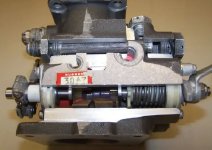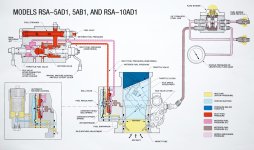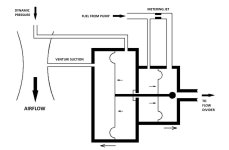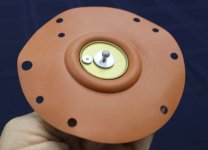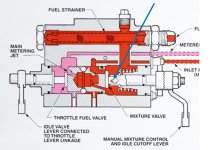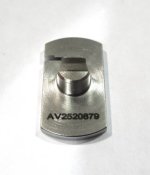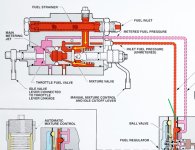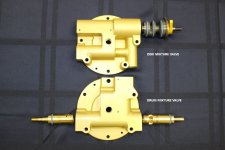Okay gents, there I was today on a fuel stop before heading the 20ish miles back home after topping off. Went to start and noticed my Dynon didn't show fuel pressure which is relatively normal once it crosses 150psi after a quick turn where the engine heat causes a pressure rise in the fuel line.
No biggy, just push the mixture in and watch the fuel pressure drop; I do it all the time before a hot start. Welllll today pushing the mixture in resulted in nothing. The pressure did not budge. Tried to start anyways to no success. Knowing that the RSA does slowly leak I went into the FBO for about 15 min and came back out. Turned the Dynon on and fuel pressure finally showed 87psi and dropping. Tried the mixture again, nothing. Waited until 56psi and tried again; finally the system bled down to zero and all was right again. Engine fired right up and after a thorough run-up and cautionary takeoff circling of the field to 12500 I was on my way. Everything operated normally the entire flight.
Okay, now the question; I have an okay knowledge of RSA internals but cannot come up with a reason in my mind as to why putting the manual mixture full rich would not equalize pressure in the two fuel diaphragms like it normally does (while not running). The internal plate should have moved, sent unmetered fuel to the metering jet and equalized. What am I missing here?
Solving the issue in the future is no big deal, just leave the mixture slightly cracked after shutdown until it bleeds down.
P.S. I'm not the only one with this problem. See this thread (post on Jan 5th and 6th 2021). Exact same scenario.
Thanks to anyone who can help me understand a bit more here. Attached is a section for your reference.
P.S. I have an Avstar unit just like in the linked forum.
No biggy, just push the mixture in and watch the fuel pressure drop; I do it all the time before a hot start. Welllll today pushing the mixture in resulted in nothing. The pressure did not budge. Tried to start anyways to no success. Knowing that the RSA does slowly leak I went into the FBO for about 15 min and came back out. Turned the Dynon on and fuel pressure finally showed 87psi and dropping. Tried the mixture again, nothing. Waited until 56psi and tried again; finally the system bled down to zero and all was right again. Engine fired right up and after a thorough run-up and cautionary takeoff circling of the field to 12500 I was on my way. Everything operated normally the entire flight.
Okay, now the question; I have an okay knowledge of RSA internals but cannot come up with a reason in my mind as to why putting the manual mixture full rich would not equalize pressure in the two fuel diaphragms like it normally does (while not running). The internal plate should have moved, sent unmetered fuel to the metering jet and equalized. What am I missing here?
Solving the issue in the future is no big deal, just leave the mixture slightly cracked after shutdown until it bleeds down.
P.S. I'm not the only one with this problem. See this thread (post on Jan 5th and 6th 2021). Exact same scenario.
Thanks to anyone who can help me understand a bit more here. Attached is a section for your reference.
P.S. I have an Avstar unit just like in the linked forum.



